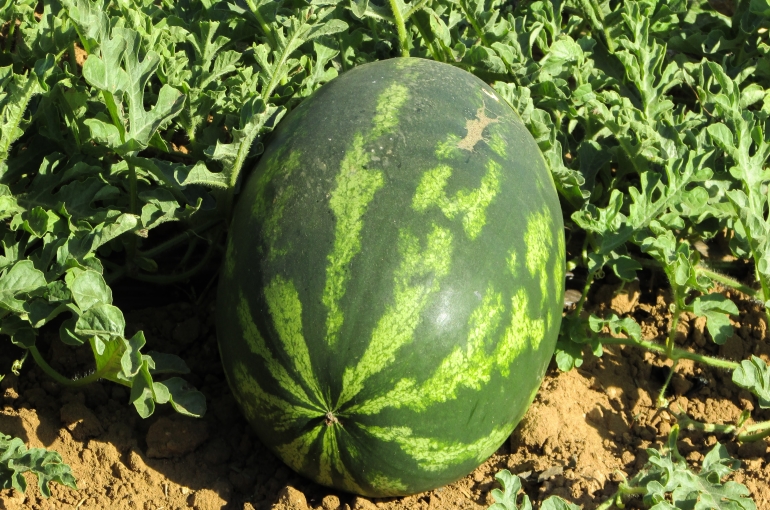8 things to consider when growing Watermelons in your Backyard

This post is also available in:
This post is also available in:
![]() Español (Spanish)
Español (Spanish) ![]() Français (French)
Français (French) ![]() Deutsch (German)
Deutsch (German) ![]() Nederlands (Dutch)
Nederlands (Dutch) ![]() हिन्दी (Hindi)
हिन्दी (Hindi) ![]() العربية (Arabic)
العربية (Arabic) ![]() Türkçe (Turkish)
Türkçe (Turkish) ![]() 简体中文 (Chinese (Simplified))
简体中文 (Chinese (Simplified)) ![]() Русский (Russian)
Русский (Russian) ![]() Italiano (Italian)
Italiano (Italian) ![]() Ελληνικά (Greek)
Ελληνικά (Greek) ![]() Português (Portuguese (Brazil))
Português (Portuguese (Brazil)) ![]() Indonesia (Indonesian)
Indonesia (Indonesian)
More and more people like to grow their own fruits and vegetables for hobby, self-satisfaction and in order to control what they eat. However growing fruits and vegetables in your backyard has some risks, do’s and dont’s and there are some things you certainly need to avoid.
Things to consider:
- If you consider starting growing watermelon from seeds, you may have in mind that in most cases the seeds you have collected after eating watermelons at home, may be sterile and thus not be able to produce fruits. Instead, consider buying certified seeds from a legitimate seller. This will ensure high germination rates and you will not lose your time.
- If you consider starting growing watermelon from plants, you may buy your seedlings from a legitimate seller and then transplanting them into their final positions. Watermelon plants may be grafted or non-grafted. Producers who choose to use grafted seedlings (mostly on squash rootstocks), seek to take advantage of some characteristics of the rootstock. For example, producers that have problems with soil-borne diseases prefer to buy either disease-resistant non-grafted varieties, or choose a variety which may be sensitive to the disease, but is grafted on a resistant rootstock. You may ask your local nursery for common soil-borne diseases that are commonly found in your region. In this way, you will be able to choose a seedling that has strong chances to overcome difficulties and finally produce well-shaped and tasty watermelons.
- Watermelons come from Africa. They need warm soil to develop and thrive. As a rule of thumb, we will plant directly our seeds or transplant our young watermelon seedlings only after we have planted every other vegetable in our garden during late spring. Watermelons need temperatures from 18°C to 35 °C (65 °F – 95 °F) and plenty of sunlight. Even a mild frost may cause serious damage to tissues and fruits. In tropical climates, winter is the best period to start watermelon seedlings, while in places with a cooler climate, we can plant our watermelon seedlings during late spring. Commercial watermelon growers cover the soil with a black plastic film, in order to heat the soil and control weeds. Backyard growers can do something similar, by covering the soil around the watermelon plant with a black mat.
- We must choose a sunny spot in our field with good drainage. When growing watermelons, spacing is very important. If we overcrowd the plants, they will not be able to produce well-formed watermelons. As a rule of thumb, we will plant 1 watermelon plant per 1 square meter. If all things go well, we will be able to collect two well-shaped watermelons from this plant. Before drilling or planting, we may need to apply some organic fertilizers to increase the nitrogen levels of the soil.
- Watermelons are considered as ‘hungry’ plants. By this, we refer to their nutrient requirements. Many growers prefer to apply manure or composts as fertilization methods during the growing period, mainly to increase nitrogen and potassium soil levels.
- Watermelon flesh contains water at a percentage of nearly 92%. Watermelon plants need a lot of water in order to produce well-shaped fruits with tasty flesh. Thus, you shall keep them moist, but avoid excessive soil moisture. On average, watermelons need 25mm of water/week. This, of course, is not a rule. Sandy soils may need more water as they cannot maintain water close to roots. On the other hand, heavy clay soils, where there is no proper drainage, may need less irrigation. We must never water the foliage, as this will favor disease outbreak.
- Some producers prefer to prune the peripheral stems of the plant, forcing it to develop further through the main vein. Pruning also facilitates proper aeration and thus, protects the plant from humidity favored infections. Other producers claim that -by pruning- we definitely delay the growth and fruit setting of the plant. However, almost all producers agree on removing most of the malformed or underdeveloped watermelons, leaving 1-3 per plant. This method is called “thinning”. This method encourages the plant to transfer its nutrients to fewer fruits, which will eventually become bigger in size and tastier.
- Harvesting watermelon when growing from seed takes on average 100 to 120 days. Most varieties are ready to be harvested about 80 days from transplanting. A good technique to spot a mature watermelon is searching for a yellow spot on the surface that is in contact with the soil. Fruits may remain at the refrigerator up to 1 month. Sugar levels of watermelon cannot be increased after harvesting.
Check out Watermelon Farms and Suppliers








































































